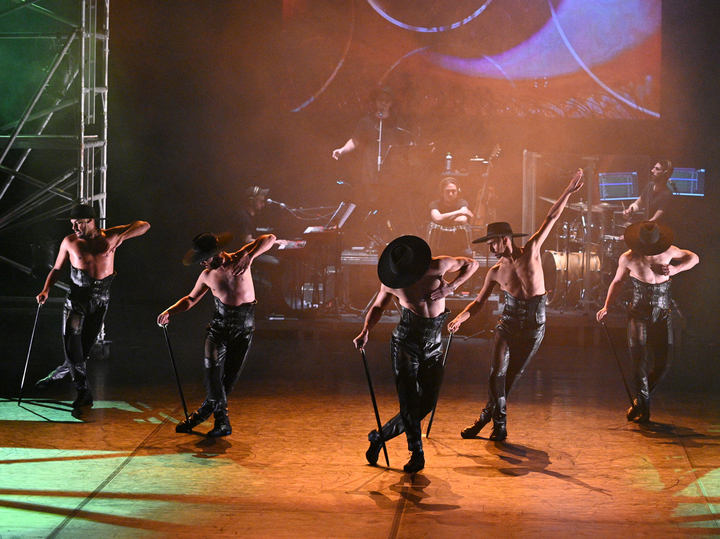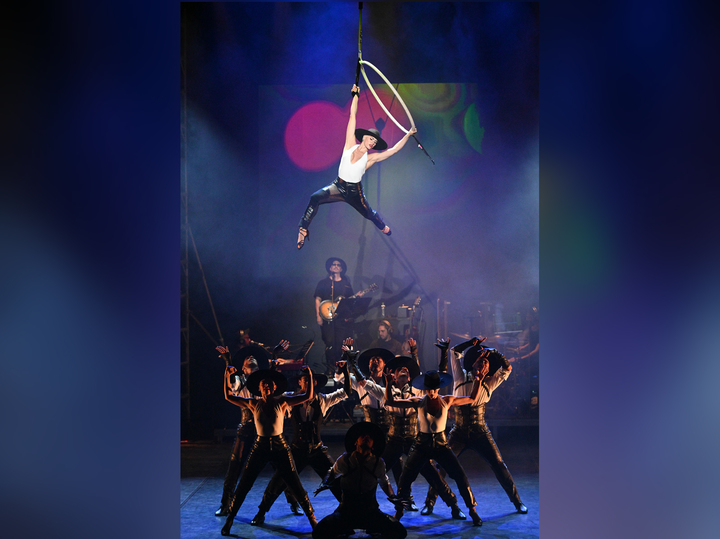The king of tango is back in Moscow: the 16th Theater Festival named after I. Chekhov
[ad_1]
Theater hall. At the end of the performance, the Moscow City Council rumbled like a stadium and greeted the artists standing on their bows. “These are great artists. They turned life into art and gave the audience two hours of happiness,” said Mikhail Shvydkoi, the new president of the Chekhov Festival, about the Argentine troupe, who went on stage with Alexander Kibovsky, head of the Moscow Department of Culture, to open the festival.
In Buenos Aires, the name of the founder and head of the Argentinean company Herman Cornejo is super famous. In Argentina, he is called the king of tango. “Wild Tango” is a new and super popular performance. Cornejo began working on it back in 2019, but due to the pandemic, the release dates for the performance have changed. Only last year the team returned to the production and at the same time they were able to show it for the first time.

This tango is really wild. The performance tells about the origin and formation of the originally wild, and now extremely cultivated and super popular dance all over the world. And it arose in the 1880s in La Plata, on the border of Uruguay and Argentina, in poor port urban areas with a predominantly mixed emigrant population as a fusion of cultures from Europe, Africa and the original population of South America. This dance is a child of the gloomy harbor areas and brothels of Buenos Aires. He was at first single and male. Tango began as a dance of men because it was danced in places where women did not go. It was a country of emigrants, and the men were just training to win over the woman.
Beggar emigrants, fortune hunters, adventurers and outcasts entered the dance, competing in masculinity, showing off in front of the girls like roosters. They went as if into a battle that could end in a stabbing. Eroticism and sensuality came to tango later, when a woman appeared in it.

In front of a curtain that says WILDTANGO in large letters, a couple of men come out. The voice behind the stage immediately warns about how this dance was born, so that our compatriots do not think anything superfluous. Other dancers also appear on the stage (that’s exactly what they are called, not dancers, as it is customary to call ballet dancers in our country). Ten men and only three women take part in the play “Wild Tango”. And it is immediately clear that it is the male tango that will be in the spotlight.
“There is an important point to be made here. When tango was born, it was very often danced by men with each other, practicing their movements in order to somehow charm women later. And the idea arose, what would it look like in our time, if suddenly men began to dance tango with each other, as it was more than a hundred years ago, – says after the performance German Cornejo about the birth of the idea. – Tango is a social phenomenon. Society constantly lives its own life, develops. And tango also changes over time. New musical trends begin to appear in it, ideas about how the movement itself in dance should look like, and the influence of other musical styles are changing. Everything changes in life, and tango changes with life. The classic image of tango is a night twilight, a beautifully dressed, embracing couple at sunset … But this is rather inherent in the rich world and only part of the image. Tango is not only sensual dance steps, but life itself, so we wanted to show those sections of society that do not have access to a rich life. Young people in jeans and sneakers go somewhere to hang out. I wonder what they would look like if they suddenly started dancing.”

Zanaces rises to open the stage with a four-piece orchestra with a traditional bandeon (Matías Rubino), without which tango cannot be imagined, and most importantly – with Luciano Bassi, who sang and played the guitar.
“You are in the center of Argentinean culture,” Bassi addresses the audience, “after all, it is impossible to imagine Argentina without tango.” The performance begins with the music of Piazzolla “Libertango”.
You will not see the costumes that the stereotypical image of tango suggests, the butterflies and tailcoats familiar from ballroom and sports dance competitions. Leather jeans and wide-brimmed hats are the wardrobe of this performance. As if gaucho – Argentine cowboys went hunting. The dancers brandish bolador – special balls on a rope that are used for hunting. They are untwisted, thrown, and they confuse the legs of the animal. These are elements of the Malambo style, which was just danced by the gauchos. This is a typical male dance, with which they proved their dancing prowess and strength. It represents a fight, a fight between men.
But mostly the dancers are wearing modern clothes that can be seen on the streets of any city in the world – torn jeans, T-shirts, T-shirts. The costume designers are Germán Cornejo and Gerardo Casas.
“We wanted to show what ordinary city life looks like, so things that I, for example, wear in everyday life, are part of the wardrobe. I’m not from the generation of the 1910s, when tango spread around the world. If I go to a dance club where they dance a milonga, I will not dress the way I dressed more than 100 years ago. I am a man of my time, and that is what I wanted to show in this show,” says Germán Cornejo.
The show features ethnic tambora drums and ordinary percussion instruments. Standing on peculiar structures resembling intricate towers, tangeros beat the rhythm. And this is a memory of the roots of tango. The word “tango” itself is of African origin, comes from the language of the Nigerian people Ibibio, where it meant “dance to the sound of a drum.”
“Wild Tango” is a mixture of all kinds of styles: rock and rock and roll, modern and urban dance, folklore, variety art and even aerial acrobatics and circus. The spirit was seized when the ring descended from the grate, and a pair of dancers in intricate twine and upside down soared over the stage like aerialists.
We continue our conversation with Herman.
– In the performance you use a lot of complex gymnastic and circus elements that require special training. Did you recruit a special team for this performance?
– No. These are the members of my permanent team. We have about 30 dancers. All of them participate in different performances. These are “Tango after sunset”, which we brought to Moscow two years ago, and the just presented “Wild Tango”, other performances. I have dancers on my team who are not just good at tango. They can do a lot more. They also have additional training. Depending on the performance, I use one or another artist from my troupe.
[ad_2]
Source link






